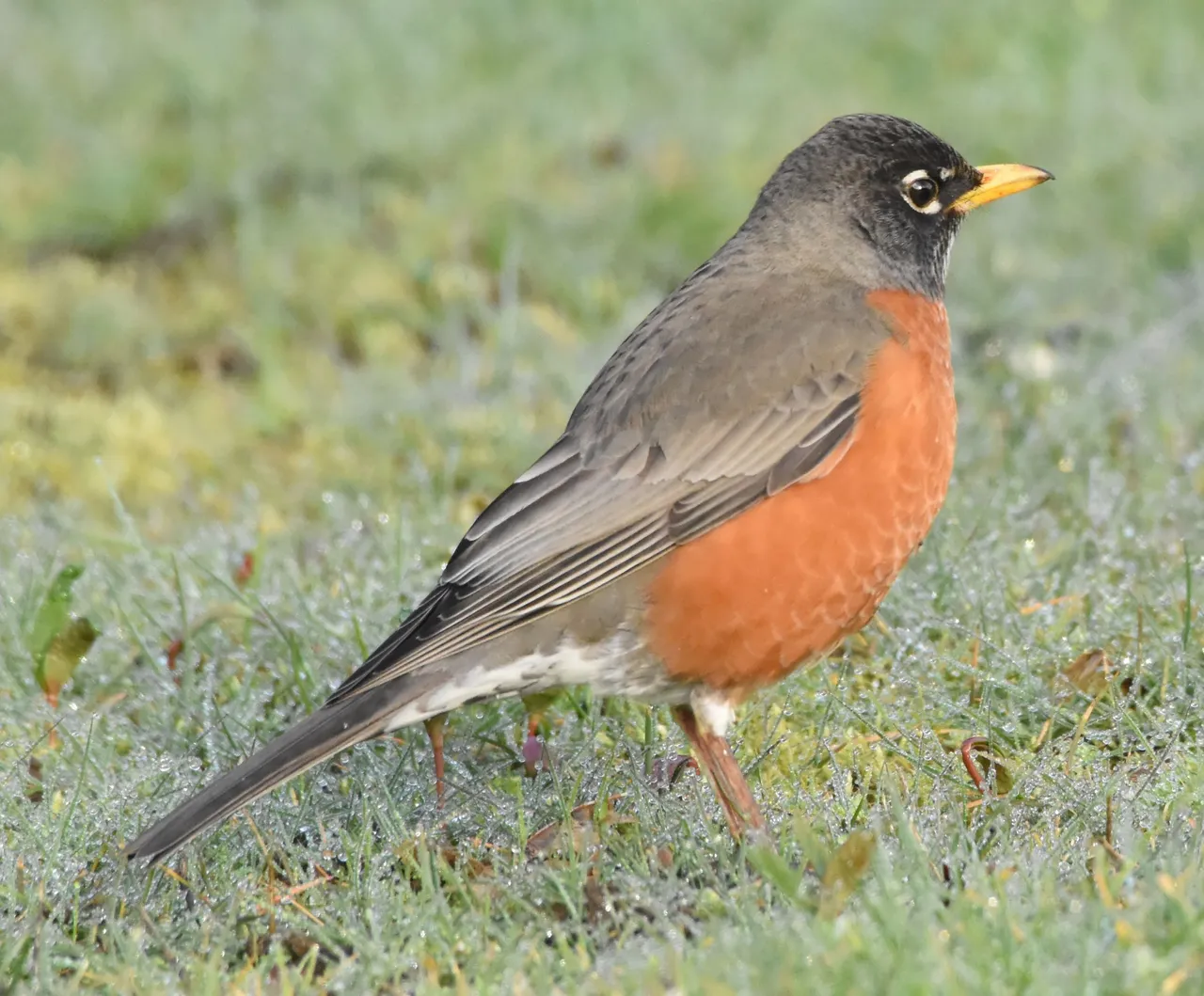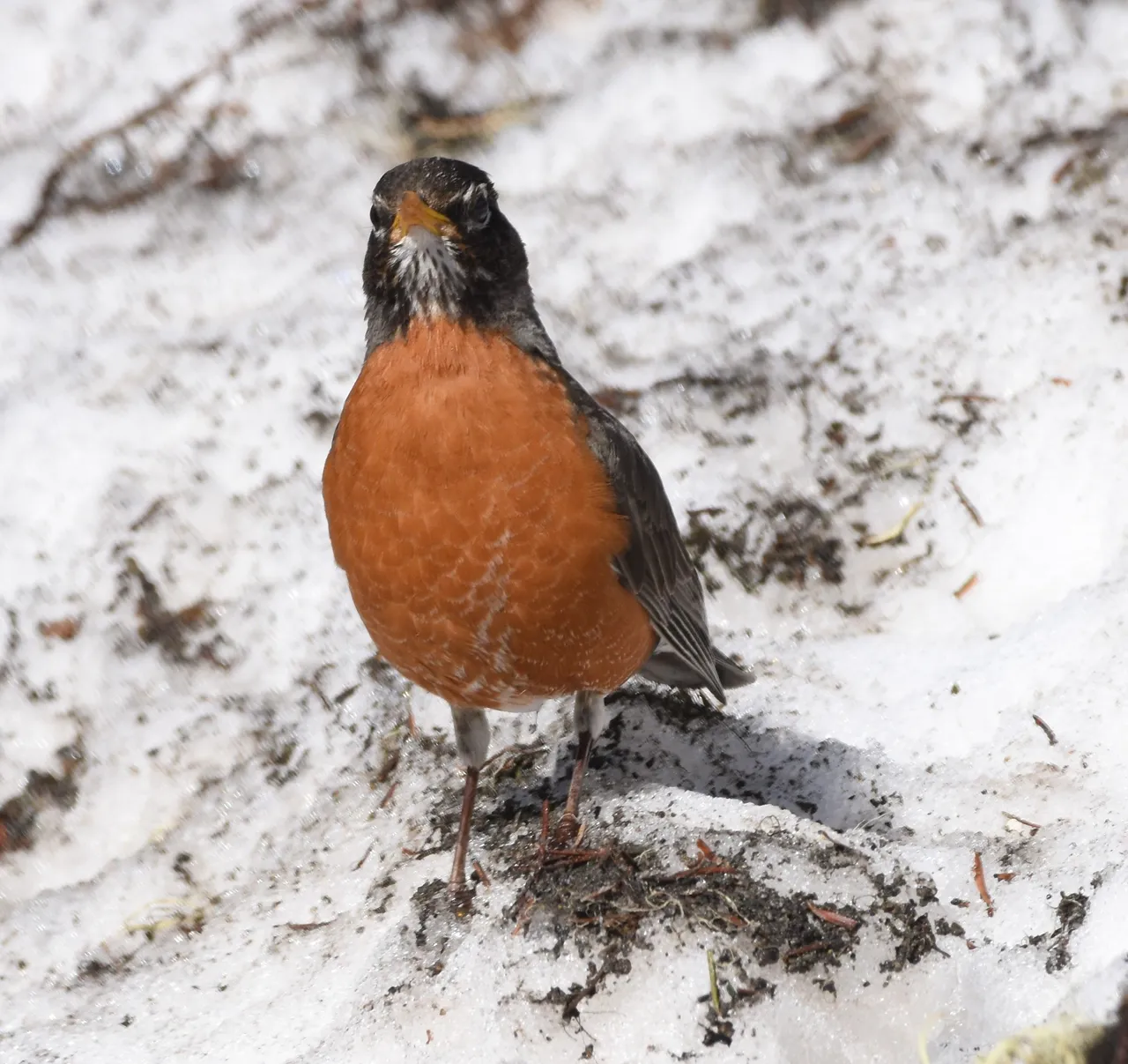
The American Robin Turdus Migratorius has the scientific name every kid gets a great kick out of and is one of the iconic birds of North America. It originally got its name of "robin" because it superficially resembles the Robin of Europe, but is not closely related to the European Robin Erithacus rubecula at all. Instead in the same genus as the Eurasian Blackbird Turdus merula, and is a thrush.

American Robins are ubiquitous in North America. This photo was taken on a hike into rocky alpine terrain above the tree line on Mt. Rainier. American Robins are found from sea level to very high elevations, and from coast to coast. They can vary their diet from season to season, often eating mostly fruit in cold climates, and soft invertebrates, especially earthworms in more moderate climates.
They are famous for their song, as are most Turdus thrushes, often being among the first birds heard in the morning chorus and heard calling and singing throughout the day.
It is felt that most populations of American Robins migrate, though not in the usual ways. Many birds move both from North to South in winter, but also from area to area throughout the non-breeding season. They can form huge flocks in the non-breeding season, and the birds found in a location in breeding season are often replaces by other more northern breeders in winter when they themselves move further south.

So if someone tells you that their robins live there all year around, they are likely wrong, as the breeders are likely replaced by essentially identical looking birds from another area in the non-breeding season.
The makes are a deeper orange and darker black than the females.

A pale looking female American Robin
If Amerian Robins were not so common, they would likely get a lot more repect as a really handsome and sought after species by birders.
Still, they are pretty cool birds.
Good birding.